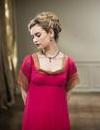
Finding stables such as these stables was a real stroke of luck, the sort of luck that you only have once in a lifetime… and not just for an architect, but for anybody! Philippe Verdussen try to find a solution for setting up the offices of Archi 2000 in these stables. He was not in a position to buy the stables, and so he found an another formula.
Project name : Écuries du Vivier d’Oie
Address : 4 avenue du Vivier d’Oie. 1000 Brussels. Belgium
Assignation/Destination : Offices
Name of client : Archi 2000
Name of architect : Archi 2000
in association with : -
Name of engineers :
- Stability Consultancy firm : Ingénieurs Associés
- Special techniques Consultancy firm : Marcq & Roba
- EPC Consultancy firm : -
- Acoustics Consultancy firm : -
- Healt & Safety Coordinator : -
- Control Agency : -
Name of contractors :
- Main contractor : Delens + Limpens (HVAC)
- Professions/trades : Polfliet : electricity / EMB Miot : concrete floor / Coprobat : sandblasting interior wall
Project status : Completed (1998-2003)
Size of project : 930m²
Budget : -
Technical sheet of this architecture video clip
Journalist : Emma C. Dessouroux
Cameraman : Emanuel Pinto / Epiprod
Editing : Emma C. Dessouroux / Emanuel Pinto
Direction : Emma C. Dessouroux
Production : Les Délires Productions
Translation : MDR Translations
Original transcription
Nous sommes ici dans les écuries du Vivier d’Oie. Et les écuries du Vivier d’Oie, c’est un coup de chance comme on en a, je pense, qu’un dans une vie… et pas seulement une vie d’architecte. Une vie tout court. J’ai découvert ces écuries qui, en fait, n’étaient pas des écuries au départ, début des années 90. C’est en promenant mon chien dans le Bois de la Cambre, puisque nous sommes dans le Bois de la Cambre, en plein cœur de Bruxelles, que j’ai découvert ces bâtiments complètement vandalisés, tagués, squattés. J’étais totalement stupéfait qu’en plein cœur de la capitale de l’Europe, il y ait un complexe pareil. Ces bâtiments datent des années 1800, en tout cas pour le bâtiment principal. Il a été construit par la Compagnie des Eaux et c’était une usine élévatoire de la Compagnie des Eaux. On allait chercher de l’eau avec une machine à vapeur dans le lac Robinson qui est à 100 mètres d’ici. On pompait l’eau et on alimentait les hydrants du Bois de la Cambre et les ouvriers communaux allaient arroser le bois de la Cambre grâce à certains hydrants. Ça a fonctionné jusque plus ou moins 1950 – 1960 et puis la ville de Bruxelles y a installé sa police montée, c’est-à-dire les chevaux de la police montée et c’est devenu les écuries du Vivier d’Oie. Les murs appartiennent à la ville de Bruxelles, le sol est régional puisque nous sommes dans le Bois de la Cambre et que tout le Bois de la Cambre est classé et appartient à la Région. Et donc, je me suis dit « je n’ai aucune chance. Je rêve éveillé. Je ne vais jamais pouvoir trouver une solution pour m’installer ». Car c’était vraiment l’idée, c’était d’assez vite installer mes bureaux dans ces écuries. J’ai été toquer à la Ville de Bruxelles, c’était l’époque d’Henri Simons à l’urbanisme qui, lui, ne voyait pas d’un très bon œil des bureaux s’installer en plein cœur du bois. Puis, pour finir, un atelier d’architecture, ça lui a parlé et il trouvait que c’était pour finir assez sympa. On a cherché à voir comment on pouvait s’installer dans ces écuries parce que, bon, acheter c’était hors de mes capacités à ce moment-là et donc nous avons trouvé la formule de la concession. Je suis donc concessionnaire de la ville comme un cafetier.
Ce sont trois bâtiments très différents puisque en fait, le bâtiment central est le cœur de l’entreprise et on accède aux deux bâtiments, à gauche et à droite, par l’extérieur. Il n’y a pas de passage couvert, il n’y a rien. On passe vraiment via la cour. Ici, vous êtes dans la cave à charbon en fait. On alimentait par les deux lucarnes que vous voyez au-dessus de votre tête, on alimentait la machine à vapeur via le charbon. Il y avait des petits wagonnets. Donc, on a rénové ça en salle de réunion. Là-haut, il y a des espaces très lumineux, très ouverts. Il faut évidemment une activité qui se prête à travailler en open space mais ce sont des volumes assez exceptionnels. On a essayé de garder au maximum l’âme de ce bâtiment. On peut voir sur les murs, en haut, les anneaux qui permettaient d’attacher les chevaux. Je vous rassure : on n’attache pas les stagiaires architectes aux anneaux ! On a gardé évidemment dans son jus toute cette cave avec cette brique apparente, on a gardé certaines grandes portes métalliques. On a vraiment refait ce bâtiment à l’identique par rapport aux années 1800, tel qu’il était conçu à l’époque. Au fur et à mesure du temps, on a eu besoin d’espace. Aujourd’hui, nous sommes plutôt serrés mais je dirais que l’on module un peu nos affaires en fonction de la taille et des espaces aujourd’hui car on n’a vraiment pas envie de quitter et on n’a pas envie non plus d’avoir deux sièges parce que ça complique tout. C’est très compliqué, c’est difficile mais donc, on s’arrange pour l’instant. On est 39-40 et ça va tout juste.
English subtitles
Here we are in the Ecuries du Vivier d’Oie.
Finding stables such as these was a real stroke of luck, the sort of luck that you only have once in a lifetime… and not just for an architect, but for anybody!
I discovered the stables, which, in fact were not originally stables, at the beginning of the 1990s, when I was walking my dog in the Bois de la Cambre.
It was here, right in the very heart of Brussels that I found the buildings – vandalised, covered in graffiti and inhabited by squatters.
I was totally amazed to find a complex like this at the heart of the capital of Europe.
The main building at least dates from the 1800s. It was built by a water company as a pumping station. A steam engine was used to collect water from Lake Robinson, which is 100m away. The water was then pumped to hydrants in the Bois de la Cambre and used by the commune workers to water the park.
This was the case until the early to late 1950s, when the buildings were taken over by the city of Brussels and used as stables for the horses of the mounted police division. They became known as the Ecuries du Vivier d’Oie.
The walls belong to the city of Brussels, the ground belongs to the Region as it is in the Bois de la Cambre, which is a protected area and comes under Regional control.
I thought therefore that I had no chance, it was just a daydream. There was no way I was going to find a quick solution for setting up my offices in these stables.
I knocked on the doors of the city of Brussels authorities. This was at the time when Henri Simons was in charge of urban planning, and he wasn’t too keen on the idea of offices in the heart of the Bois de la Cambre.
However, in the end he decided that an architecture firm was rather a good idea.
We then had to find a way of making it possible to set ourselves up here. At that point I was not in a position to buy the stables, and so we found the formula of a concession. I am now a concessionaire in the city like a cafe owner.
The three buildings are very different. The central building is the heart of the business and the two other buildings, to the right and the left, can be reached by going outside. There isn’t any sort of covered passageway; you have to go through the courtyard.
Here, we are in the coal cellar. The steam engine would have been fuelled with coal through the two openings that you see over your head. There would also have been small wagons.
We turned this area into a meeting room.
Upstairs the areas are very bright and very open. The activity carried out there obviously has to be suited to an open-plan environment, but the areas are exceptionally spacious.
We tried to retain as much of the soul of this building as possible. At the top of the walls you can see the rings to which the horses used to be tied. I assure you that they are not used for tying up our trainee architects!
We obviously left the cellar with its original exposed brickwork; we also kept some of the large metal doors. We renovated this building so that it was identical to how it would have been in the 1800s, as it was intended to be at the time.
As time has gone on we have needed more room. Today, space is pretty tight, but we tailor what we do according to the space we have. We really do not want to leave and nor do we want two offices, as that complicates everything. It’s difficult, but for the moment we manage. There are 39 or 40 of us, and it’s just about possible.


